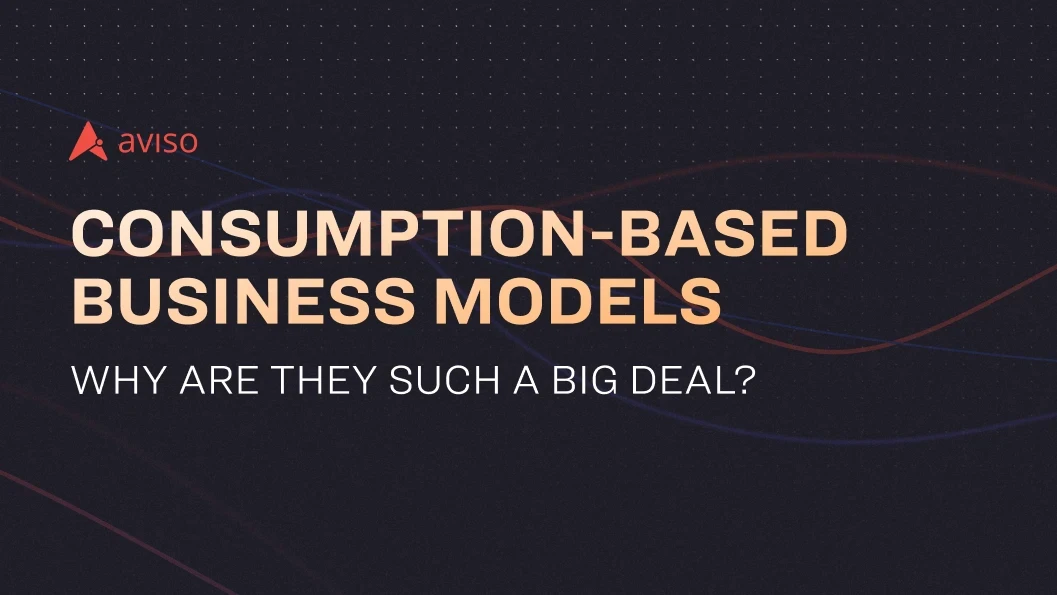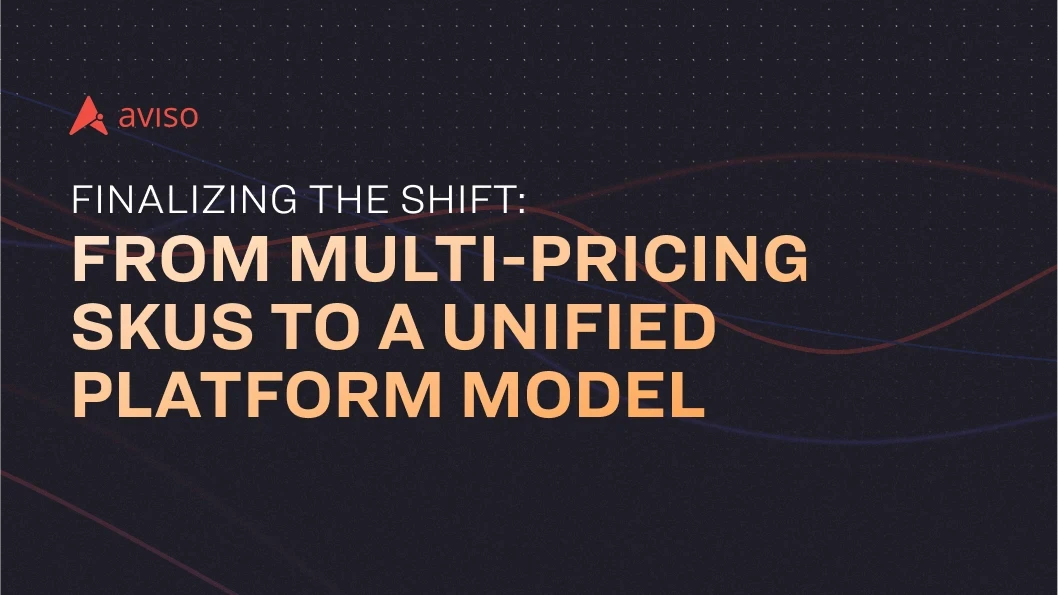Consumption-based business models - Why are they such a big deal?
Apr 26, 2023
What are Consumption-based models?
Consumption-based models are based on the idea of paying only for the resources or services used, rather than a fixed fee or subscription. The increasing prevalence of pay-as-you-go models, such as SaaS, shared services, professional services, and manufacturing, has led to the growing popularity of consumption-based revenue models, also known as XaaS. Although utilities have long employed this model, many firms have recently adopted it as well. Usage-based pricing is also gaining ground over user-based pricing.
Consumption-based business models are used in a variety of industries and can take many forms.
Examples of consumption-based models in business
Software as a Service (SaaS): This is a common consumption-based business model in which customers pay a recurring subscription fee based on their usage of a software product.
Pay-per-use: This is a model in which customers pay only for what they use or consume. For example, a utility company may charge customers based on their actual usage of electricity or water.
Subscription-based services: This is a model in which customers pay a recurring fee for access to a product or service. This can include subscription boxes like choice of food/diet on a daily basis, or a curated selection of beauty products each month.
Sharing economy: This is a model in which customers share the use of a product or service, rather than owning it outright. Examples include ride-sharing services or vacation rental platforms etc.
Freemium: This is a model in which a basic product or service is offered for free, with additional features or functionality available for a fee. This is often used in mobile app development, where users can download and use the app for free, but can access additional features by purchasing a premium version.
CRM Opportunity-based Vs Usage/Consumption-based Business Models
Opportunity-based and consumption-based business models are two different approaches to generating revenue and creating value for customers.
Opportunity-based business models focus on identifying market gaps or unmet needs and creating innovative solutions to address them. These models typically prioritize creating new opportunities for growth and expansion, often through research and development, strategic partnerships, and mergers and acquisitions. Opportunity-based models often require significant upfront investments, but can lead to long-term profitability and market dominance.
In contrast, consumption-based business models prioritize maximizing the value delivered to customers through their consumption of a product or service. These models typically charge customers based on their usage or consumption, rather than upfront costs or fees. Consumption-based models are often used in industries like software as a service (SaaS), where customers pay a recurring subscription fee based on their usage of the product. This approach can create more predictable revenue streams and foster long-term customer loyalty.
Unlike opportunity-based models, consumption-based models generate revenue each time a customer increases usage, not just at the time of purchase.
Rising tide of consumption models and implications for revenue processes
Findings from the Pacific Crest survey revealed that 37% of businesses primarily adopted a pricing model based on the number of users, whereas 23% relied on usage-based pricing. However, a recent survey by OpenView Partners reveals that 39% of companies now charge based on usage. To build a successful business based on a consumption model, accurate consumption forecasting is critical, which involves predicting revenue gained through pay-as-you-go or run rate businesses.
Managing revenue for opportunity-based models involves contracts that have a fixed amount for a product or service over a specific period. This is different from managing consumption-based forecasting, with implications all the way from how forecasting is done to revenue recognition.
Some Key Advantages of Consumption Forecasting
B2B companies, such as SaaS and media customers, monitor real-time usage to understand their spending on pay-as-you-go products, such as cloud services. To more accurately forecast consumption revenue, businesses can use predictive analytics, such as Aviso AI's advanced algorithms and machine learning capabilities, to adjust their business strategies accordingly.
Accurate consumption forecasting allows businesses to identify potential risks and opportunities, make informed decisions that drive growth and profitability, and work more efficiently and collaboratively. In conclusion, the popularity of consumption-based revenue models is increasing, and precise consumption forecasting is crucial for business success.
Opportunity or account-based forecasting is realized through contracts that include a fixed amount for a product or service for a set period of time. On the other hand, consumption forecasting is realized on a pay-as-you-go basis by usage, where revenue is realized every time a product is used.
The Challenges With Consumption forecasting
Consumption forecasting depends on your ability to predict revenue from pay-as-you-go or run rate businesses or how fast resources are used against a purchase order or contract. While most companies forecast their revenue by account or opportunity, consumption-based forecasting is increasingly favored by companies that want to recognize revenue solely by usage of their products or services.
The everything-as-a-service model, also known as XaaS, has gained popularity as a revenue model among SaaS firms, shared services, professional services, and manufacturing, according to a Deloitte study. The shift towards a pay-as-you-go approach has led to an increase in consumption-based revenue models, which more and more companies are adopting.
To learn more, read this post on Consumption Forecasting
Conclusion
The rise of cloud computing and subscription-based software businesses has made consumption forecasting a common model in the tech and manufacturing spaces. Many B2B companies, like SaaS, media, and financial services, use consumption models to monitor usage in real-time and gain a clear understanding of how much they're spending on cloud services or other pay-as-you-go products.
Accurate forecasting consumption is critical for business success, and businesses can leverage tools such as Aviso AI's predictive analytics to gain real-time visibility into their consumption revenue, identify potential risks and opportunities, and make data-driven decisions to drive growth and profitability. What’s unique about Aviso AI’s Consumption Forecasting capabilities is that it’s the only Revenue Intelligence Platform that can:
Capture buyer signals across CRM and non-CRM data sources
Deliver the architectural flexibility to track the run rate of consumption
Combine traditional revenue forecasting with consumption-based forecasting to showcase a complete view of the business across multiple product lines
Curious about how AI can help you increase the accuracy of your consumption-based forecast? Sign up for a product walk-through of Aviso AI.





